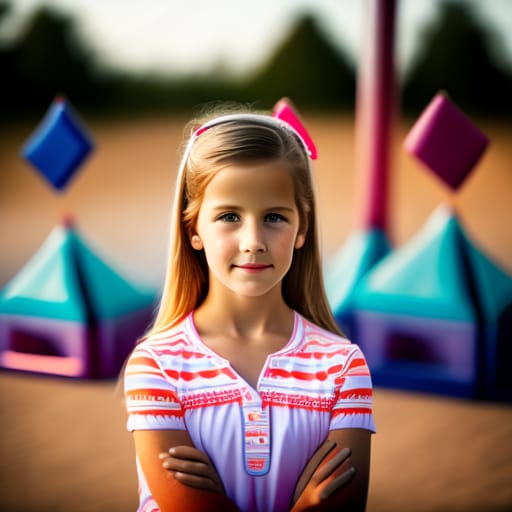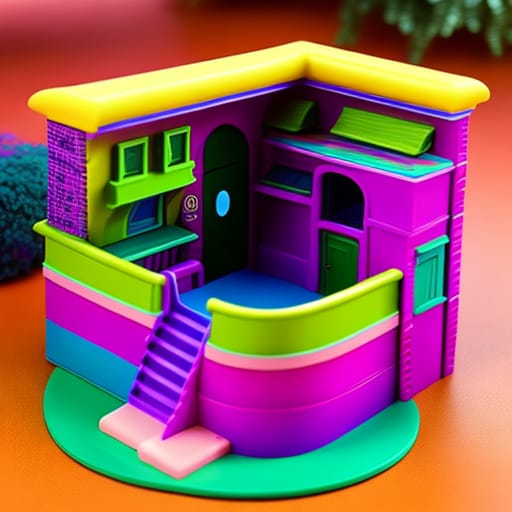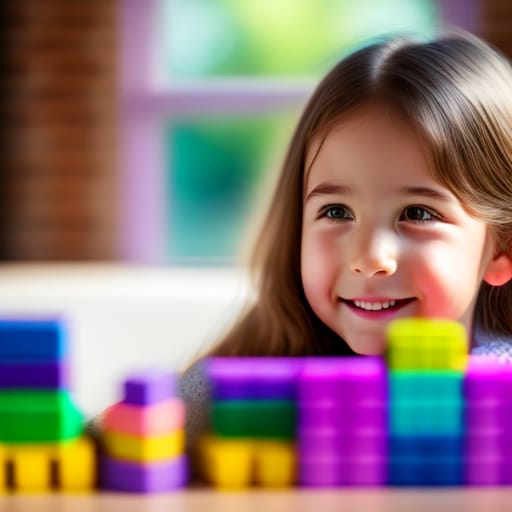For children of the early 1990s, Tyco’s pastel-hued building blocks hold a special place in our hearts. They conjure fond memories of hours spent constructing dream bedrooms, kitchens, shopping malls and more. But Tyco’s foray into girls’ construction toys was brief, lasting only from 1991-1992 before the line was discontinued.
In this nostalgic guide, we’ll explore the history of Tyco’s overlooked building toys targeted to young girls, the context for their creation, and why they ultimately failed to gain traction. We’ll also showcase the delightful details that made these recreational artifacts so memorable. So lock the door to your teen bedroom, brew a pot of tea in your toy kitchen, and join us for a vibrant trip down memory lane!

An Effort to Tap an Overlooked Market
The early 1990s marked the height of Lego’s popularity. The classic building bricks inspired endless creativity in children across the globe. But the Danish toy company’s marketing at the time aggressively targeted boys – their iconic red and yellow packaging, along with sets featuring pirates, race cars and space ships catered directly to young males.
Sensing an opportunity, competitor Tyco aimed to leverage Lego’s overlooking of young female consumers. In 1991, the New Jersey-based toy manufacturer launched Tyco Super Blocks – a colorful series of building sets designed specifically for girls.
“We saw Lego focusing on boys and ignoring the girls market,” recalled Bill Wynne, former senior vice president of Tyco Preschool. “We thought there was an opportunity to attract them.”
The new Tyco line, later rebranded as Dream Builders, positioned itself as a vibrant, versatile alternative to Lego, with customization for young female builders in mind.
Vibrant Pastel Color Palette
The most noticeable differentiation from Lego was Tyco’s use of cheerful pastel colors for their plastic bricks. Gone were the primary reds, blues and yellows associated with traditional building toys. Instead, Tyco introduced unique ombré-style hues like lilac, seafoam green and peach.
The soft color palette extended across Tyco’s entire new product line – including bricks sold in creative bucket tubs (dubbed the Creation Station) and larger playsets featuring buildings like ballets studios, stables and beach houses.
“We wanted toys girls would be proud to decorate their rooms with,” said Tyco marketing executive Michelle Spellman in a 1992 interview. “The pretty colors let any girl transform her bedroom into a creative space.”
The pastel bricks provided the perfect material for young girls to construct vibrant dream environments.
Table: Tyco Product Line Featuring Pastel-Colored Building Bricks
| Product | Description |
|---|---|
| Creation Station | Creative brick tubs with 400+ pieces in shades of purple, teal, pink and peach ombré. Bricks compatible with other Tyco sets. |
| Dream Builders | Core building brick sets (50-100 pieces) featuring iconic locations like ballet studios, horse stables, beach houses in coordinating pastel colors. |
| Super Blocks | Larger, more advanced building sets with 200+ pieces. Sets include realistic builds like suburban houses, dream vacation hotels, shopping malls, amusement parks and more. |
| Specialty Sets | Themed build sets with unique pieces and mini-figures. Examples include the Dolphin Aquarium, Butterfly Gardens and Starlite Skating Rink. |
While Lego did offer some girly-themed sets like the Paradise Line, their trademark colors and minifigures remained geared towards boys. Tyco’s custom color palette and decorative building options uniquely catered to young girls’ interests.

Details Inspired by Girls’ Hobbies and Environments
In addition to the charming color schemes, Tyco infused the building components with decorative details referencing interests, hobbies and environments familiar to young girls.
Themed Playsets invited children to construct detailed scenes from ballet studios, horse stables, suburban homes, amusement parks and other locations young females would connect with. The builds incorporated realistic details from each setting like barres, curtains and chandeliers for the dance academy or saddles, brushes and teddy bears for the equestrian stable set.
Mini-Figures also reflected the target girl demographic, with characters like ballerinas, fairies and bunnies. The figurines matched the visual identity of sets with their predominantly purple, pink, pastel palettes.
For advanced builders, some kits included extra sophisticated elements like turntables, working drawbridge pieces, and batteries to motorize amusement park rides, skating rinks or carousels from specialty builds. While not as complex as some Lego offerings, these mechanisms added an element of motion and interactivity for more ambitious constructions.
Ultimately the visual and thematic customization of Tyco sets catered directly to young girls’ preferences in colors, stories, and activities. Lego sets of that era simply did not offer the same focus on females. Tyco capitalized on this market gap…at least temporarily.
Why Tyco’s Building Toys for Girls Flopped
Initially, Tyco saw enthusiastic demand for their girl-focused building line. Their [pastel-colored bricks] even drew interest from adult collectors on specialty building toy forums. Listings for rare [Dream Builder] sets still appear on secondary markets like BrickLink and Eurobricks.
However, by 1992 Tyco suddenly discontinued all girls’ building toys, with products vanishing from shelves. Why did the brightly-hued construction kits fail to achieve lasting success?
Most analysts point to struggles competing with Lego’s industry dominance and brand recognition. Although Tyco saw a profitable gap in the market, dethroning the long-reigning champion proved difficult.
Lego had patented technology locking their brick pieces together since 1958 – these glimpses of innovation challenged knock-off [Lego clone] brands. According to Bill Wynne, Lego “not only had an incredible product and brand reputation, their iconic brick design even earned patent protection.”
Gendered marketing likely also played a role. While Tyco aptly identified Lego’s negligence of young girls, the Danish toy giant held almost monopolistic control of building toys for decades. Their cultural stronghold proved extremely difficult for imitators to overcome.
Ultimately Tyco ceased production of all girls’ building brick lines by 1993 to refocus on more profitable toy ventures like [radio controlled cars], [model trains] and of course the omnipresent Beanie Babies of the mid 90s.
While the colorful construction toys got shelved, Tyco’s bold effort illuminated a clear gap in the market. The niche they identified eventually became formalized as Lego Friends – a smash success and one of Lego’s most popular targets to young girls today.
So while Tyco’s short-lived building kits never reached iconic status themselves, they certainly played an unsung role in prodding the giant Lego to finally diversify their marketing strategy.

Preserving Nostalgic Girl Toy History
Although Tyco’s pastel-colored building bricks flew under the mainstream radar, they hold delightful nostalgic value for girls coming of age in the early 90s. The toys represent an important evolutionary step towards gender inclusion in the construction toy market.
While original Tyco building sets dwindled, especially rare [Dream Builder] collections, many bricks remain fully compatible with major brands. So creative parents, collectors and kids can mix the charming [pastel pieces] into builds with leading names like Lego, Mega Bloks or other construction brands respecting classic brick patents.
Sites like BrickLink also keep Tyco’s unique history alive, with user-generated guides helping identify rare minifigures, building components and sets for devotees seeking a dose of 90s girl power nostalgia. So between collectors maintaining sets and compatible play with major building kit brands, Tyco’s ambitious – if ephemeral – creative legacy persists.
Preserving Pastel Building Memories
Tyco left an endearing, if fleeting, impression on girls’ construction toys in the early 1990s. While the colorful building kits failed to outmuscle Lego long-term, they made their mark in toy history.
Next time you spot a pastel pink, purple or teal brick, take a moment to appreciate Tyco’s pioneering yet overlooked foray into the girl toy zeitgeist. And if you just heard the sound of a plastic saddle or fairytale figurine snapping onto a build nearby…well, perhaps some 90s nostalgia wafts more vividly than you realized!
Frequently Asked Questions
What were the unique features of Tyco’s pastel-colored building toys?
Tyco utilized a custom color palette not seen in brands like Lego at the time, with soft and vibrant hues like lilac, seafoam, peach, and pale pink. The ombré-style bricks were designed to appeal visually to young girls interested in decorating their bedrooms and play spaces.
How did Tyco customize their Dream Builder sets for girls?
In addition to the colorful bricks, Tyco employed decorative elements in their Dream Builder sets referencing interests familiar to girls. This included theming builds around topics like ballet studios, fairy tales, and amusement parks. Special figurines also reflected girls’ preferences with characters like ballerinas and bunnies.
Why did Tyco discontinue their building toys for girls so quickly?
While the line saw initial success, Tyco struggled to compete with Lego’s dominant industry reputation and control of brick-based construction toys. Effective marketing across gender also proved challenging at the time, though the effort did eventually influence Lego Friends.
Where can I still find Tyco’s 1990s girls’ building sets today?
Vintage Tyco building sets remain available on secondary markets like BrickLink and eBay, especially rare collections like the Butterfly Garden or Starlite Skating Rink. Tyco bricks also interlock with leading brands, so the pastel-colored pieces can integrate creatively into new builds.
Did Tyco’s short-lived Lego alternative for girls make any lasting impact?
Although discontinued quickly, Tyco’s line highlighted an underserved demographic and pushed Lego to expand their marketing. So while Tyco didn’t find lasting success themselves, the effort paved the way for girl-focused construction toys to grow as a distinct market with inclusive, creative themes moving forward.
Do Tyco building bricks still stack up against today’s leading toy brands?
Since Tyco respected brick patent guidelines pioneered by Lego, their bricks from the 1990s interlock and integrate perfectly with contemporary building toy leaders. So while sets are rare, the durable pastel bricks creatively mix and match into modern builds equally well decades later.